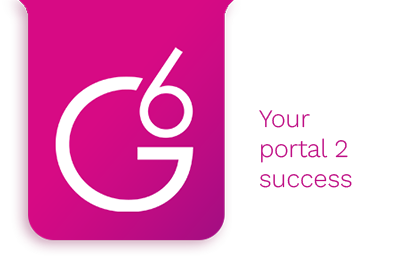Are you striving to make next quarter’s sales report better than ever before? While this goal is admirable, it demands specific software, practices, etc., to achieve.
Where do you start? And how can you ensure you’re investing your money in a reliable, tested strategy that boosts sales productivity?
Hi! My name is AJ! I’ve recently sold my business for multiple seven figures. Today, I aim to help entrepreneurs like YOU uncover techniques to take your company to unimaginable levels!
After being in business for several years, I endured a lot of frustration with my sales process. That’s until I discovered sales force automation!
What do I mean by automation? Keep reading! I’m going to share little-known secrets that’ll jumpstart your sales department!
Key Takeaways
Sales force automation created automated workflows that streamline the sales process.
SFAs can increase productivity and efficiency in your sales department.
Using SFA and CRM systems side by side leads to enhanced customer profiles, more sales, and happier employees!
SFA systems include features like task and pipeline management, as well as third-party cloud integrations.
Related Reading: Best CRM for Small Businesses
SBB Featured Partners
Sales force automation (SFA) is software and applications for sales management.
Sales force automation software creates automated workflows that offer a streamlined sales process to manage sales leads better.
Additionally, SFA technology helps companies manage sales forecasts and overall and individual performance.
Sales force automation is also called salesforce management.
Sales force automation is a type of software functionality that automates certain sales processes.
As a result, sales teams can manage and track help data, including the following:
Sales opportunitiesCertain customer interactionsStages of the sales pipeline each lead is atTeam performanceIndividual performance
Sales automation software is incredibly helpful and carries several benefits (when teams implement it correctly).
When a sales team uses sales force automation tools successfully, they can see each detail involved in the sales pipeline, from initial contact to closing the deal.
That way, you can rest assured knowing nothing critical fell through the cracks.
Typically, companies use SFA software alongside CRM software.
Although the two tools work together wonderfully, it’s essential to understand they are NOT the same thing. If you are wondering what is CRM software, I will get to that later in this article!
Perhaps you’re considering sales automation but need encouragement to pull the trigger and invest.
Sales force automation tools are extremely beneficial to several businesses in various industries.
For instance, some of these advantages include the following:
Sales productivityMore workplace efficiencyBetter, more accurate reportingIn-depth sales forecastsBetter employee engagement
Let’s look at each of these benefits more in-depth!
A sales force automation system boosts employee productivity because several parts of the sales process are automated.
Therefore, your sales reps can dedicate their time and effort to customer-centric activities that generate more sales.
For instance, without sales automation tools, sales teams must spend considerable time manually entering data and other administrative tasks.
However, sales automation tools automated these tasks for your team.
As a result, your employees can spend more time calling prospects, closing deals, and building personal relationships with clients!
If you want to boost sales productivity, an automation system is a must-have!
Sales force automation tools streamline the sales process by seamlessly sharing information with team members and departments.
Therefore, this leads to smoother communication and less time wasted searching for necessary data or awaiting responses.
Also, automating routine tasks increases efficiency because the software ensures nothing gets forgotten or slips through the cracks.
For example, SFA software streamlines the sales process by automatically handling tasks like:
Data entryFollow-up emailsCreating sales reportsAdding integral data into your sales CRM
Automation systems also allow sales reps and managers to see the latest contact communication, meaning there are fewer instances where two employees complete the same task (this wastes valuable time).
What’s the outcome of automating repetitive tasks?
Your team can focus on what they do best – sealing the deal.
Ultimately, this leads to greater efficiency in the workplace, a more harmonized team, and, potentially, a healthier bottom line.
Better, more accurate sales reporting is an often overlooked benefit of SFA systems.
However, your SFA tool must have tools for reporting and data analysis, which gives your company a huge leg up on your competitors!
Enhanced reporting offers sales managers valuable insights for monitoring and forecasting, allowing them to change course or implement strategies as needed.
Understanding what’s happening with your team’s sales activities ensures you understand your pipeline better.
Additionally, accurate reports allow you to take action quickly as your customers or the market changes.
The result? Your team can increase sales!
Sales force automation software is incredibly accurate because it reduces human error.
The software eliminates the need for manual data entry by automatically transferring information into your CRM.
Also, SFA software reduces sales reps’ and managers’ mistakes by streamlining processes and ensuring nothing is overlooked in the sales cycle.
Further, you can set update reminders in the system so your team knows when and how to follow up with customers.
Overall, SFA eliminates errors that come from human interaction, meaning more accurate data for better sales pipeline forecasting and decision-making.
Accurate sales forecasting is essential for budgeting and planning.
Sales force automation makes it easier to forecast your team’s performance accurately because the system tracks details such as:
Customer interactionsProgress in the sales pipelineLead StatusMarket trendsAverage time for sales efforts
Overall, this leads to a better understanding of what’s happening in your pipeline and allows you to forecast sales more accurately.
Why is accurate forecasting essential?
Predicting future sales helps your team dedicate the proper amount of time and effort to specific customer segments, products, etc., as the market changes.
Therefore, sales teams only spend time on meaningful tasks, leading to more sales!
Your sales team is likely one of your company’s most significant assets, so their work environment must engage and encourage them.
Sales force automation tools make the workday easier for sales teams, reducing repetitive tasks and enhancing their effectiveness and customer engagement.
As a result, sales reps can focus on what they do best – building personal customer relationships!
Building relationships leads to better customer satisfaction and more sales and repeat purchases.
Sales force automation systems make it easier for reps to see, track, and meet sales goals.
Setting team and individual goals motivate your employees because they have something to strive for.
What tools does sales force automation include to help your business?
Below I’ve compiled a list of popular features you must look for in an SFA system!
Let’s see what they are!
Contact management systems help your team store and organize important contacts and their information.
Additionally, contact management software does the following things:
Tracks communication with customersCreates a complete communication historyStores essential contact data (name, address, phone number, etc.)Tracks and stores sales interactions and history
Typically, contact management and task management software work hand in hand (I’ll review that feature soon).
Sales force automation software allows managers to track and monitor the progress of deals in the sales pipeline.
Pipeline management systems help your team:
Analyze data to identify trends or opportunitiesSet goals for repsMonitor sales rep performance based on sales targetsAutomatically update customer records as deals move through the pipelineView the probability of each qualified leadPredict future sales
The bottom line is that you can make smarter decisions faster and predict sales potential accurately with pipeline management software.
Task management features ensure that all the tasks your sales team needs to complete are completed on time.
Also, this software integrates customer-related tasks into a shared team calendar, ensuring nothing integral slips through the cracks.
SFA systems use task management tools to:
Automate reminders and notificationsTrack follow-ups with customersCreate a checklist of tasks for sales professionalsManage activities across the entire organizationAssign tasks to specific employeesBuild customer profiles based on interactionsAutomatically store records related to the sales process
Task management helps sales teams stay organized, which leads to fewer mistakes and more closed deals!
Additionally, task management software improves customer service experiences because sales efforts aren’t duplicated, and your entire team can access the same customer profiles.
Using SFA with customer relationship management software improves team collaboration and communication.
Cloud-based CRMs integrated with SFA software allow teams to access information wherever they are.
So, if your company has remote salespeople, they can still contribute to and access customer profiles.
Therefore, you don’t need to synchronize data because everything gets updated in real-time.
Sales force automation software ensures sales teams are productive and can work together on various projects and sales leads.
Sales force automation systems integrate with cloud-based applications, allowing more efficient data sharing.
These integrations also eliminate the need for manual data entry because you can automatically update customer information from various applications in your CRM.
In other words, you can access a range of apps from one centralized hub.
Some examples of cloud-based applications include the following:
Google Apps (Gmail, Docs, Sheets, etc.)Microsoft Office 365 (Word, PowerPoint, Excel, etc.)DropboxSlackZoom
Why are third-party integrations crucial to successful and efficient companies?
Integrations ensure employees don’t have to switch between multiple programs to complete tasks.
For instance, say an employee must log in to one software to find a customer’s contact information and another to view their purchase history.
It may not seem like it, but jumping between programs wastes valuable time (and can frustrate your team)!
Integrations create seamless transitions as your sales team navigates from a shared calendar to sales software.
Customizing your sales force automation systems allows you to reflect the unique processes associated with your company or industry.
For example, if your business is in the medical sales industry, your SFA system could include specific forms, products, etc., that your reps need to perform their job correctly.
Also, you can customize an automation platform to function on numerous devices, including laptops and mobile devices.
A sales force automation system is incredibly versatile, meaning your business can use it for several aspects.
For example, you can use sales force automation software to do the following things:
Streamline and automate various sales processesLead generationContact managementSales pipeline managementTask managementImprove team collaborationCloud app integration
The primary goals of SFA systems are to increase efficiency in the sales process and provide better customer service.
A sales force automation platform can help small businesses increase sales productivity, shorten the sales cycle, and improve customer engagement.
SFA helps businesses analyze and gain actionable insights regarding their sales pipeline using customer data.
Streamlining sales pipelines is crucial because it ensures businesses use their resources and employees’ time effectively.
Lastly, tools like SFA or CRM ensure companies make data-driven decisions efficiently.
While your team can undoubtedly create the reports and data analysis documents a CRM system develops, it takes significant time and effort.
Therefore, investing in advanced software is worth the cost, especially in the long run!
You’ve heard me mention CRM systems multiple times throughout this article because most CRMs include SFA capabilities.
Still, the two tools are not the same thing. Companies often use SFA and CRM because they help businesses succeed in numerous ways.
Let’s see the differences between sales force automation and customer relationship management!
An SFA platform’s primary and only focus is on the sales process.
That said, sales force automation software strives to make the sales cycle as efficient and transparent as possible.
As a result, your sales team is more productive because they can quickly see how to handle leads and close deals.
Most SFA programs contain contact and pipeline management tools to improve the overall sales experience.
Therefore, sales managers have clear pictures of the company’s current leads, future prospects, recent sales, and previous performances.
Also, SFA technology helps sales departments track and meet goals because critical data is organized in an easy-to-understand way.
For instance, SFAs offer individual and team performance reports.
These reports allow leaders to see which sales reps perform best and which need assistance understanding the sales pipeline.
Put simply, sales force automation focuses solely on sales. As you will see in the next section, CRMs have a broader scope.
CRM providers design their systems to focus on customer satisfaction and relationships.
For instance, CRMs collect customer data at various touchpoints to create in-depth profiles of each individual.
As a result, sales and marketing teams can craft personalized ad campaigns and sales techniques that resonate with each person.
CRMs are built to focus on customer retention, meaning the people who continually return to purchase your products or services because they’re so happy with the shopping experience.
Further, CRM systems centralize customer information for employees. That way, team members can quickly find what they’re looking for without jumping between programs.
Some of the customer information CRMs collect can include the following:
Phone numbersEmail addressesSocial media handles and activityWebsite ActivityCustomer service interactionsHow the individual has interacted with the brand in the pastPurchase history
CRMs collect an incredible amount of data that simply wouldn’t be possible for companies to do manually (and if they did, it would take forever).
Lastly, CRMs are beneficial to businesses in numerous ways. For example, CRMs come with the following advantages:
Centralized dataIncreased employee productivityBetter customer serviceHigher satisfaction and retention ratesMore salesOrganized and productive employees
As you can see, if CRMs have been on your radar, they are definitely worth investing in!
As previously mentioned, SFA tools can automate manual processes that cost your team valuable time.
For instance, when your sales team completes one task in the sales cycle, it automatically triggers another, which your SFA system handles.
So, let’s say a potential customer completes an online form that pops up on your website; this automatically creates a new lead in your CRM system.
At the same time, your SFA system creates a follow-up reminder for a sales rep to add the new lead to a marketing campaign.
SFA tools primarily aim to handle administrative tasks that take your sales reps away from customer-centric duties.
While you can’t automate every part of the sales cycle, numerous parts waste valuable time.
When choosing which tasks to automate, look for the repetitive ones that don’t directly deal with a customer.
I’ve used several CRM providers throughout my time running a business.
Below are two trusted providers I’d recommend to anyone! Each of these CRM providers offers some of the best sales force automation software in the industry.
Let’s take a look!
HubSpot is an excellent CRM provider. The company’s software is easy to use and has a beginner-friendly interface.
Also, HubSpot’s plans are designed with small businesses in mind. The free program includes several advanced tools that won’t cost you a penny!
Regarding the sales automation tools, HubSpot automates lead retention, creates tasks, and streamlines follow-up messages.
Additionally, HubSpot’s sales automation software allows you to do the following things:
Create sequences and workflowsPersonalize emails with information from your CRM databaseRotate leadsCreate dealsAutomate tasks
And did I mention HubSpot offers a free demo to try the automation tools before investing?
Are you interested in learning more about HubSpot? Check out our full HubSpot CRM Review!
Freshsales is another reputable CRM provider.
Like HubSpot, Freshsales offers free demos for new customers. Also, the provider has a 21-free trial deal if you’re on the fence.
Freshsales has advanced software, including some of the industry’s best automation tools.
These automation tools increase efficiency by automating repetitive and complex tasks.
Some of the things Freshsales’ system can automate include the following:
Workflows (sales processes based on conditions and event-based triggers)Sales sequences (outreach campaigns based on day or behavior-based triggers)Auto-profile enrichment (gain more information about your prospects)Territory management (prospect segmentation and prioritization)
Another unique feature Freshsales offers is IntelliAssign.
With IntelliAssign, you can automatically route conversations to the best-suited customer expert or team based on skills, conversation limits, etc.
Compared to HubSpot, Freshsales’ most advanced plans are much more affordable, with the Enterprise plan only costing $69 per user per month (billed annually).
If you are interested in learning more about Freshsales, check out our full Freshsales Review!
Sales force automation software strives to streamline your company’s sales process by automatically completing repeat tasks.
As a result, your team devotes more time and energy to building customer relationships and closing deals (sounds incredible, right?)!
It’s best to utilize SFA technology with a CRM system because you can build better customer profiles and target individuals with personalized sales experiences.
What sales automation feature did you find most intriguing? Let us know in the comments section below!
And good luck finding the best sales automation/CRM combo for your business!
The post What is Sales Force Automation? Guide for SMBs appeared first on Small Business Bonfire.
—
Blog powered by G6
Disclaimer! A guest author has made this post. G6 has not checked the post. its content and attachments and under no circumstances will G6 be held responsible or liable in any way for any claims, damages, losses, expenses, costs or liabilities whatsoever (including, without limitation, any direct or indirect damages for loss of profits, business interruption or loss of information) resulting or arising directly or indirectly from your use of or inability to use this website or any websites linked to it, or from your reliance on the information and material on this website, even if the G6 has been advised of the possibility of such damages in advance.
For any inquiries, please contact [email protected]




